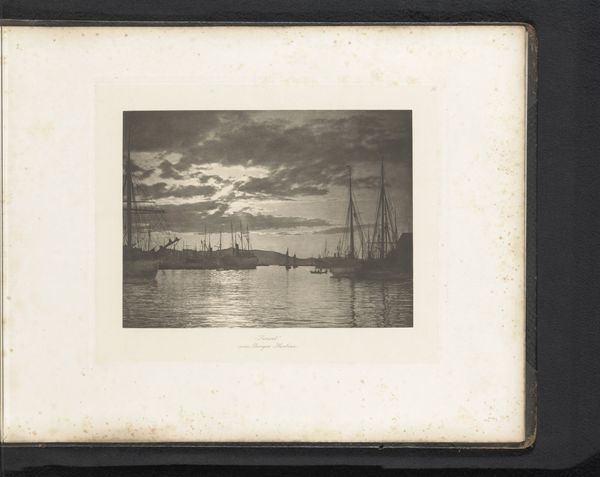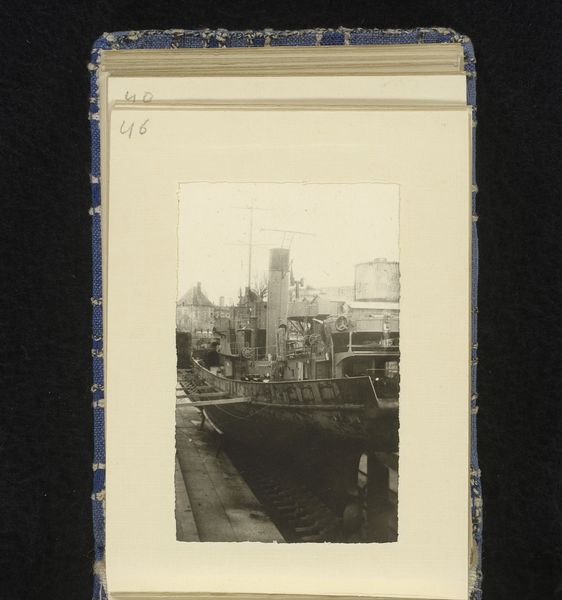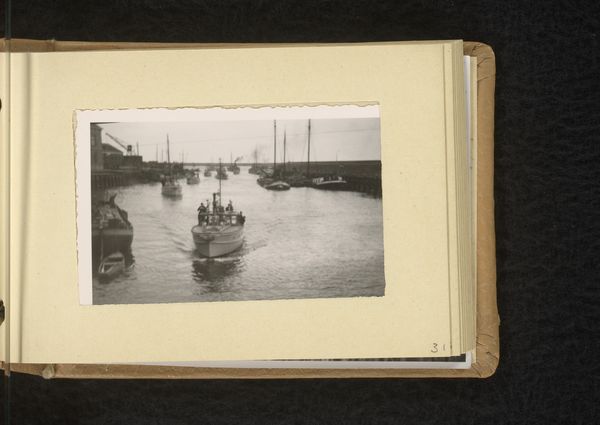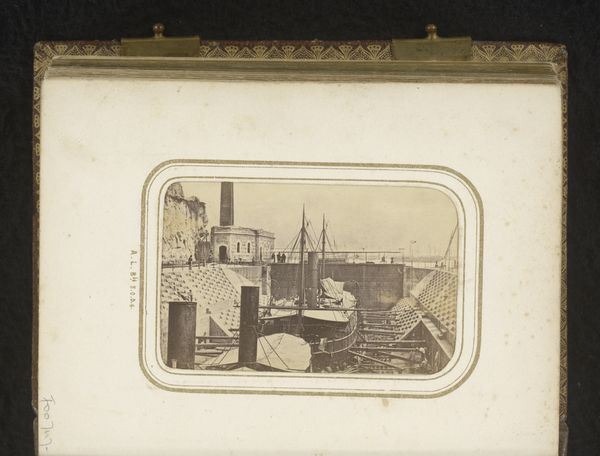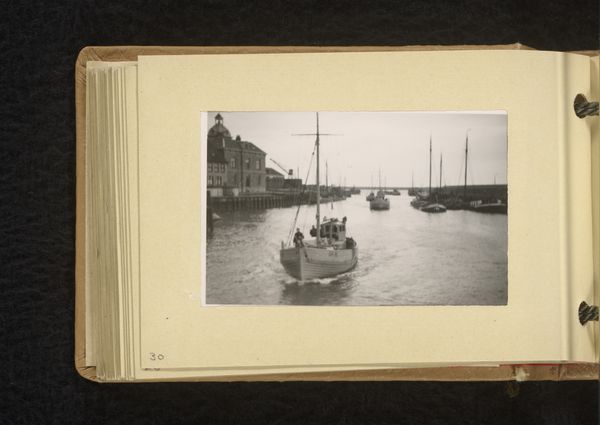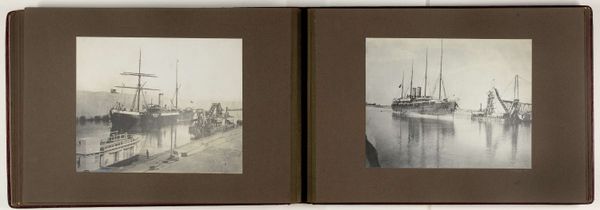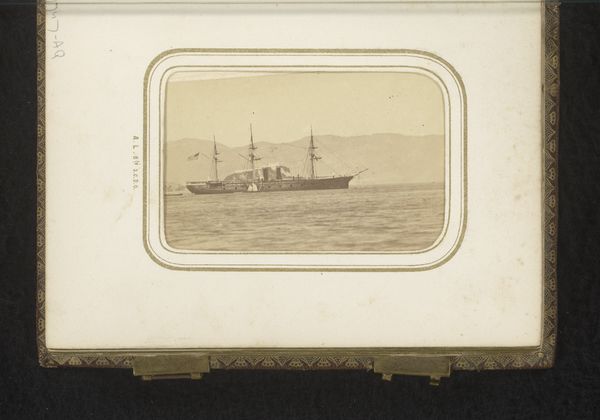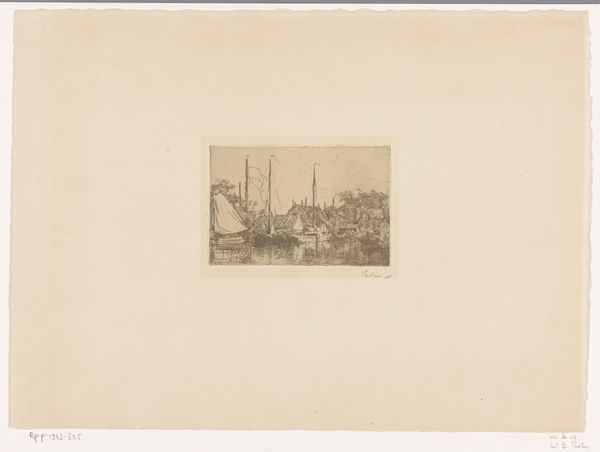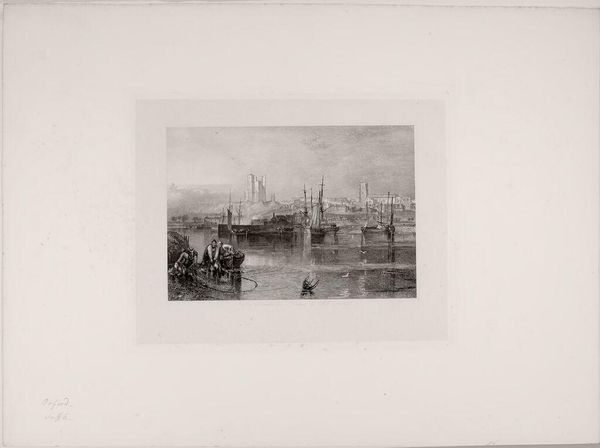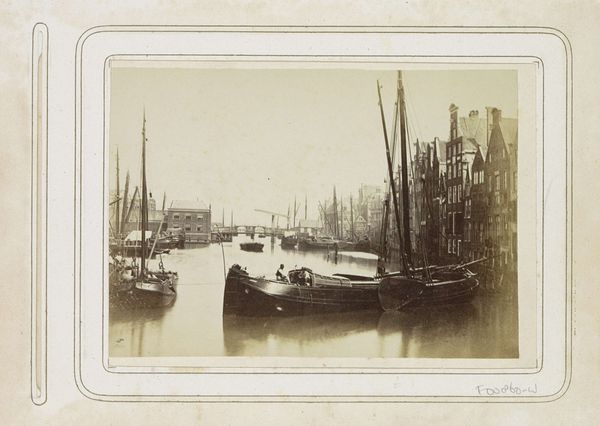
photography, gelatin-silver-print
#
sculpture
#
landscape
#
photography
#
gelatin-silver-print
#
modernism
#
realism
Dimensions: height 90 mm, width 60 mm, height 85 mm, width 120 mm
Copyright: Rijks Museum: Open Domain
Curator: "Schepen van de Kriegsmarine" or "Ships of the German Navy" captured sometime between 1940 and 1943, it’s a gelatin silver print found in the Rijksmuseum archives. The photographer remains anonymous. What's your immediate reaction to it? Editor: Somber, I think. Despite being a scene filled with boats and water, there's an almost metallic chill to it. The uniformity of the vessels and the overcast sky contribute to a sense of... enforced order, maybe? Curator: Exactly. These fishing trawlers, pressed into service during wartime. They once symbolized independence, but here, reflecting on that calm water, they seem more like ghostly reflections of a lost era, now co-opted into a larger, much darker narrative. The ripples aren’t from playful waves. Editor: The masts themselves remind me of crosses, strangely. Is that a deliberate compositional choice, do you think, or am I reading too much into the scene? They're simple fishing vessels—they shouldn't evoke this heavy symbolism. Curator: An iconographer sees symbols where others don’t! I think there's a layered complexity. We're talking about machines used to take human life. Even these humble fishing boats now function under the symbol of nationalistic aggression. It’s like they were built and meant to carry certain types of values that turned in another thing! Editor: It's fascinating how an image, even one seemingly straightforward, can hold so much cultural weight. You know, each element carries stories beyond its literal representation. The masts, the ships themselves. They accumulate meaning. And time! These are still active historical wounds. Curator: Which is why photography as a medium can cut so deeply. The gelatin silver print—a now archaic technology but still producing sharp contrast capturing the moment. And here it’s trapping echoes, or radiating it forward. These images continue to haunt, even as time fades the silver. Editor: Well, the shadows and silence are still really affecting—I'm sitting with a lot now. I may need to walk along the canals myself after seeing this. Curator: Sometimes, just observing lets the world speak for itself. You just need to create a stage.
Comments
No comments
Be the first to comment and join the conversation on the ultimate creative platform.
